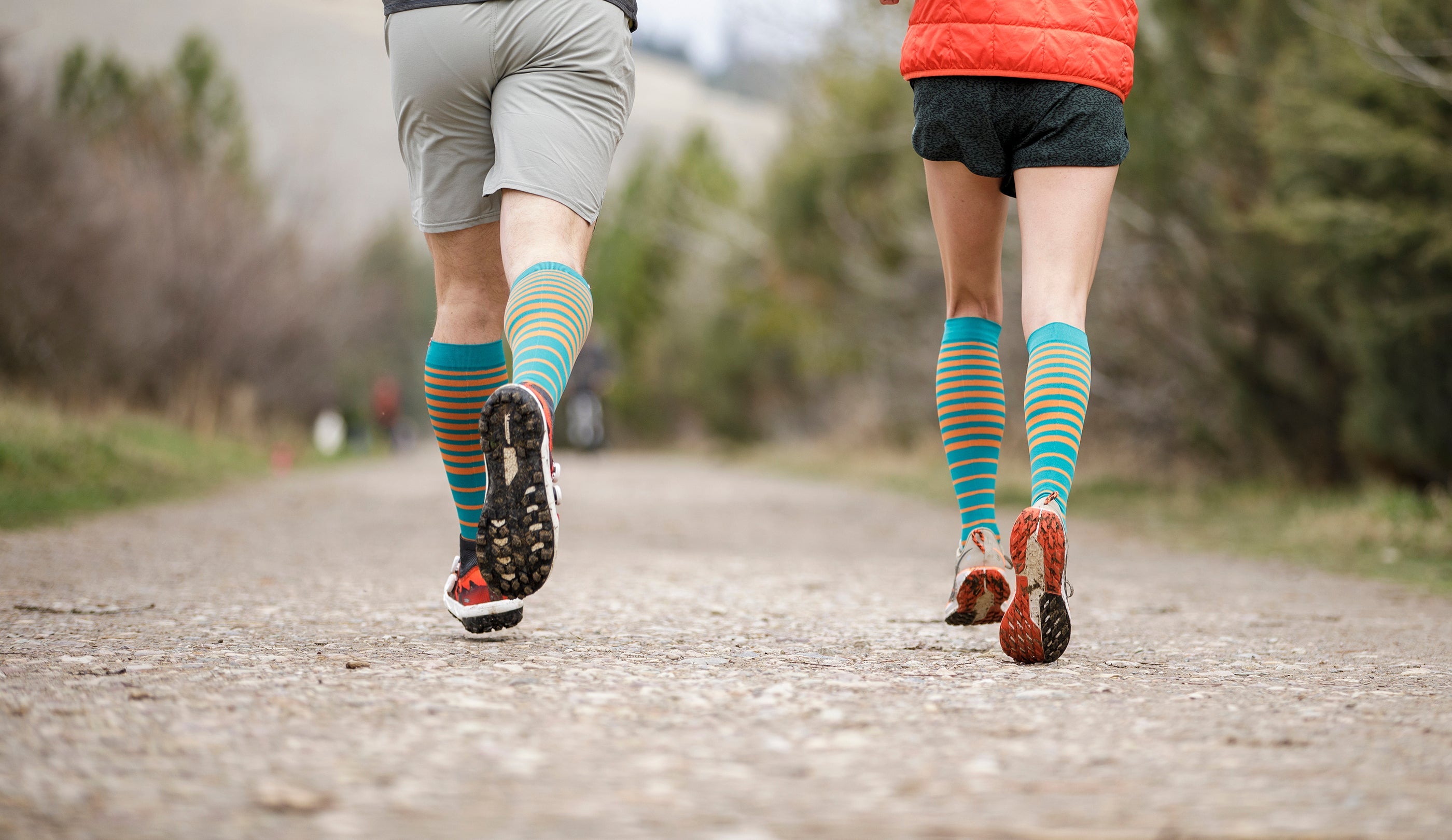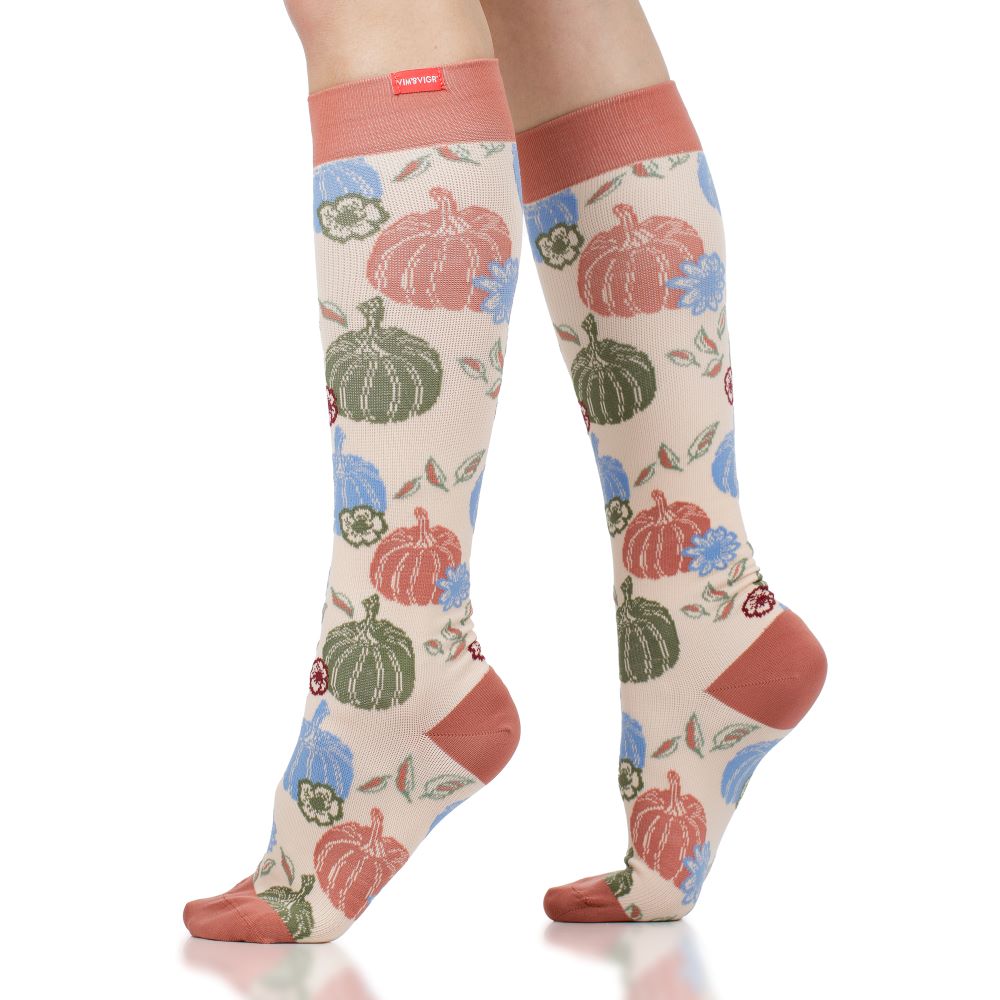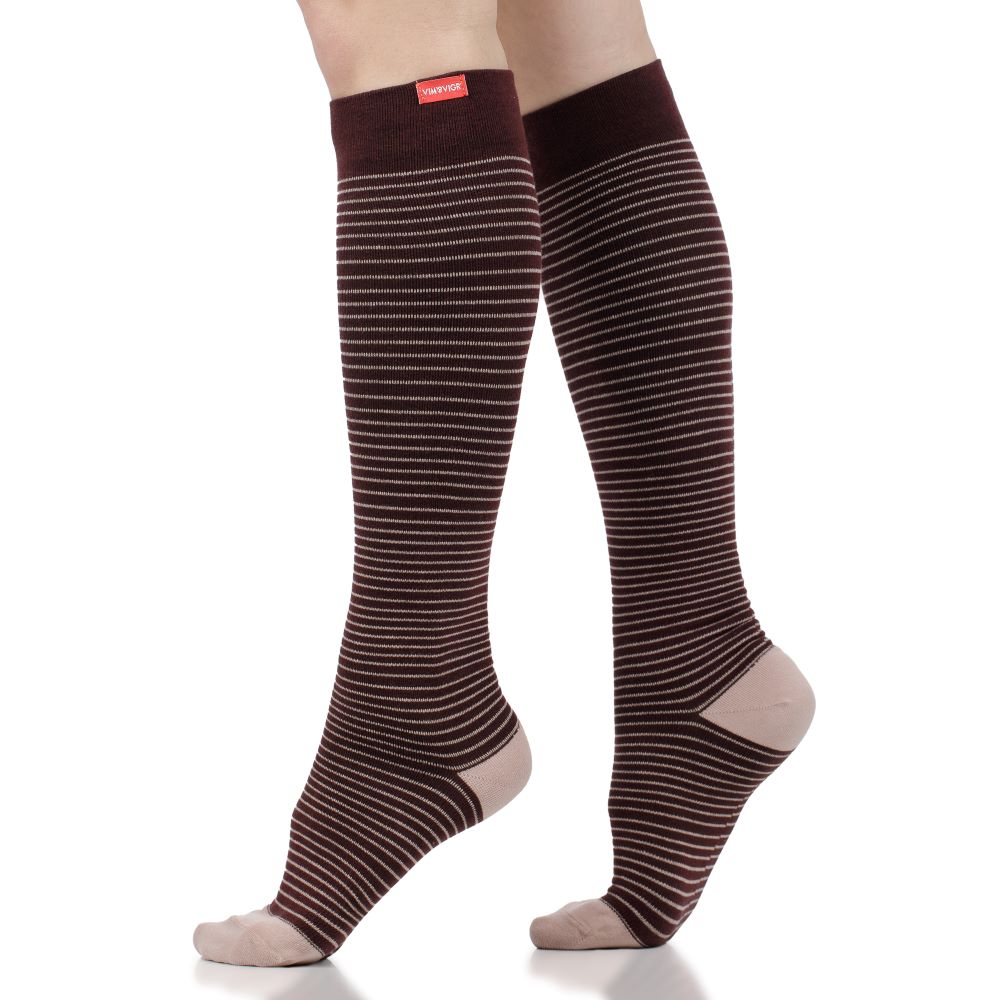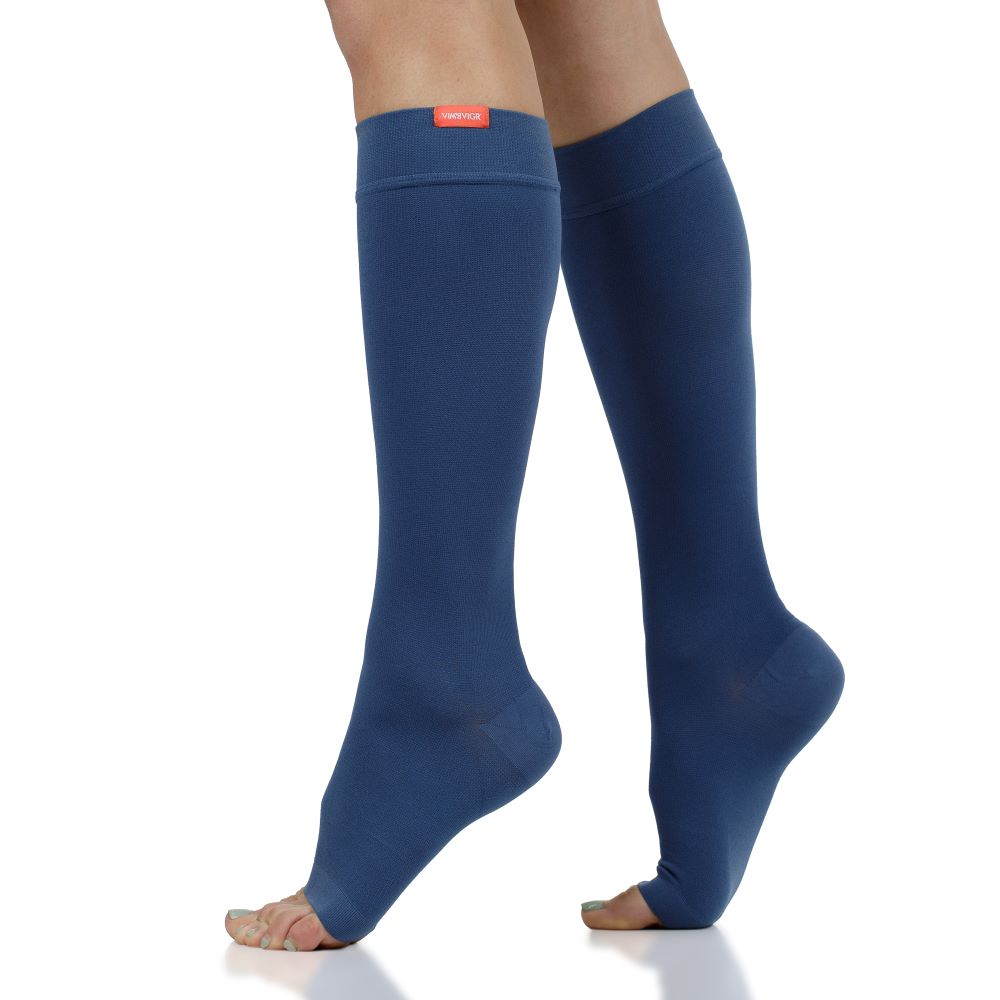Comfort Matters: Should Compression Socks Hurt?
Compression therapy is useful for athletes, people who spend all day on their feet, or those suffering from various medical conditions. However, compression socks sometimes get a bad rap: they can be uncomfortable, even painful to wear, if they’re not the best size and compression level for you.
It’s time to shed light on the very important question of comfort: should compression socks hurt when you wear them? A well-fitted pair of compression socks that’s made from the right materials and applies the right amount of pressure should be comfortable and a pleasure to wear. So, why do some patients hurt when wearing them and what can you do to avoid that happening to you?

Read on to find out why your legs and feet may sometimes hurt when wearing compression socks, how to maximize your comfort, and when it might be time to change your socks completely or stop wearing them.
Are Compression Socks Supposed to Hurt?
In a nutshell, no, compression socks should not hurt. Wearing any compression item of clothing does feel different than wearing loose clothes, of course. The main role of compression is to support and massage your muscles and joints. However, compression socks should apply gentle pressure to the limbs, stimulating blood flow up towards the heart thanks to different levels of tightness.
Graduated compression stockings and socks are tighter at the ankles and progressively looser towards the knees. This is what helps prevent blood from pooling lower in the legs and causing swelling, edema, pain, and discomfort. Just like regular compression garments, the tightest part of these socks will be noticeable, but not so much that it hurts.
The Purpose of Compression Socks and How They Work
Thanks to the pressure applied to the limbs, compression socks stimulate good blood circulation in the lower legs. Graduated compression boosts blood flow upwards from the ankles towards the heart, avoiding swelling, pain, and discomfort.
Studies show that therapeutic pressure exerted on the limbs helps increase the circulation of oxygenated blood into the legs. This plays a role in recovering from hard efforts, bringing oxygen and nutrients to the muscles and helping athletes feel ready for their workouts sooner. It also makes it easier for less active people to get into exercising, reducing muscle soreness and discomfort associated with sports.
Moreover, compression socks are prescribed by doctors for recovery after certain injuries and surgery. The support they provide to blood flow ensures that there are no blockages or blood pooling in the legs. This reduces the risk of bed-ridden patients developing blood clots, varicose veins, or deep vein thrombosis.
Finally, since compression socks offer a tight, gentle support to the legs muscles, they’re also comfortable to wear during exercise. They reduce the impact of micro vibrations on the muscles from landing on a hard surface repeatedly (for example, during running, jumping, etc.). This can increase the time you can spend doing an activity before the legs get sore and it offers better support when you’re coming back from an injury, e.g. after calf strains or shin splints.

How Are Compression Socks Supposed to Feel?
There’s no doubt: compression socks need to feel tight around your legs and feet. If you wear graduated compression stockings, you’ll feel more pressure around the ankle and less towards the knees.
However, the tightness should not lead to pain. If anything, it should feel like a supportive massage against your muscles.
Why Do My Legs Ache After Wearing Compression Socks?
If your compression socks are not the right size or pressure level, then they could make you sore. Socks that fit too tightly risk cutting off blood circulation, which can lead to pain and bruising on the legs. If you’re feeling this even while wearing the socks, you should remove them right away.
Additionally, too-tight socks can make your legs numb, which can then lead to “pins and needles” feelings when you remove them. Finally, if you’re allergic to the material they’re made from, you could get sore or itchy skin and rashes.

Should Compression Socks Leave Marks?
Normally, well-fitting compression socks don’t leave marks on the skin. If your pair has some intricate designs, these could be imprinted on the skin after many hours of wear, but they’ll fade away quickly once the socks are off. Sometimes, socks with too thick stitching can make marks on the skin, too.
Potential Causes of Pain or Discomfort with Compression Socks
While most people get numerous benefits from wearing compression socks, there is a risk that you could develop pain or discomfort from them. Here are the main reasons this could happen.
Wrong Size
The number one reason for compression socks being uncomfortable is that they’re simply too small for you. They should always fit tightly so that they’re exerting pressure on the muscles and joints, but never so much that they’re cutting off blood flow. This is why it’s essential that you follow a sizing guide when you buy a pair of compression socks.
Compression Level Too High
Another common problem can be if you’re wearing compression socks that exert too much pressure on the limbs. Compression levels are expressed in mmHg and vary from firm, yet manageable, to medical grade:
- 15-20 mmHg - firm compression that feels like a gentle massage on the legs and can be worn all day without issues;
- 20-30 mmHg - moderate compression, usually appropriate for patients with varicose veins or edema;
- 30-40 mmHg - highest level, prescription-only stockings and socks that are worn after surgery or if suffering from more serious medical conditions.
Incorrect Application
When you put on your compression socks, you need to be careful that there are no kinks or folds that can apply unwanted pressure on the legs. These can turn very painful very quickly. Additionally, socks must reach to just below the knee - if you’ve folded them over, you’re adding too much pressure on that part of the leg.
Allergic Reactions
Finally, you need to be aware of the fabric of your compression socks and whether or not you could be allergic to it. Some people develop a nylon allergy - this is a popular material for compression socks as it’s stretchy and flexible. You may also be allergic to merino wool, another popular compression sock fabric.
How to Maximize the Comfort of Compression Socks
You cannot know about all the risks above in advance. Sometimes, you’ll find out “the hard way” that there’s a material you’re allergic to. Luckily, we have some tips for preparing yourself to maximize the comfort of compression socks, or at least to seek alternatives if what you’re doing right now isn’t working for you.
Finding the Right Size and Style for You
The right size and design of compression garment are two key elements of comfort. Follow a size guide to make sure you get that perfect fit.
Compression clothing for the lower legs also comes in various designs:
- Traditional compression socks, reaching just below the knee and providing compression from the knee down;
- Compression sleeves or calf sleeves, ideal if you want to change socks or have bare feet;
- Open-toe compression socks for wear with sandals;
- Compression stockings and tights for full-leg cover.
Consider your activity choice and your personal preferences when you decide what style to go for. For example, runners who love a particular type of sock may want to wear calf sleeves only. However, travelers preparing for a long flight may prefer to wear full compression socks or even tights to get the benefit of graduated compression on blood flow and reduce chances of swollen legs and feet.

Material and Fabric Choice
If you know you’re allergic to a type of fabric, avoid it when buying compression socks. However, things can get a little more complicated if you have particularly sensitive skin, for example. You should always choose your socks based on the weather conditions and your activity, so that they can keep your feet dry and comfortable. Here are the most common compression sock materials to choose from:
- Cotton - comfortable and soft, ideal for all-day wear, but doesn’t wick moisture as effectively as other fabrics (so to avoid in humid climates or when running and hiking);
- Merino wool - hypoallergenic, soft, and antibacterial, merino wool is suitable for those with sensitive skin; it is excellent at thermoregulation and moisture wicking, so can be worn in the summer to prevent sweating, but also in winter to keep feet warm and dry;
- Nylon - soft and flexible, nylon moves with your body and is thinner than other fabrics; it’s a great choice for dancing, running, or playing sports, but is less effective at moisture wicking than merino wool; go for specially blended moisture-wick nylon in humid conditions.
Increase Your Compression Level Gradually
If you’re not used to wearing compression socks, they can feel too tight and uncomfortable. This is why it’s good to start by wearing them for shorter periods of time, while also opting for the least firm compression level at the start.
Once you’re familiar with the 15-20 mmHg socks, and especially if this is required for your personal circumstances, you can increase your compression level. It’s a good idea to discuss this with your doctor, too.
Proper Application Technique
Avoid snags, bunching, rolling down, and other problems with compression socks by following a step-by-step guide to putting them on.
Understanding Pain vs Discomfort and When to Discontinue Use
Just like with physical exercise, there can be a fine line between socks being tight and firm and becoming painful. A slight level of discomfort can be expected, especially when you first start to wear them.
However, here’s how you’ll know if your compression socks are too tight:
- Legs are going numb;
- There’s a mark on the leg where the sock band is;
- There is bruising;
- The color of your skin changes;
- You cannot get them on, no matter how carefully you try.
In all the cases above, you should stop wearing that particular pair and look for a size up. You should discuss with your doctor if you think pressure levels are too high for you, too.
Find out more about using compression socks after injury here and see how they help with chronic illnesses.



















Leave a comment